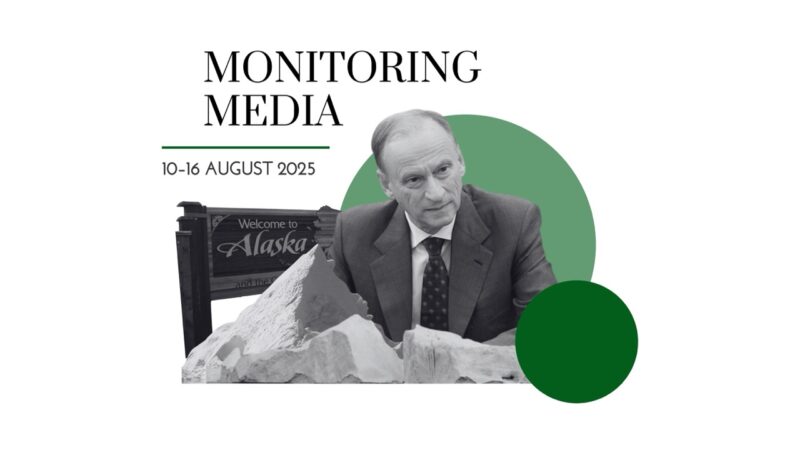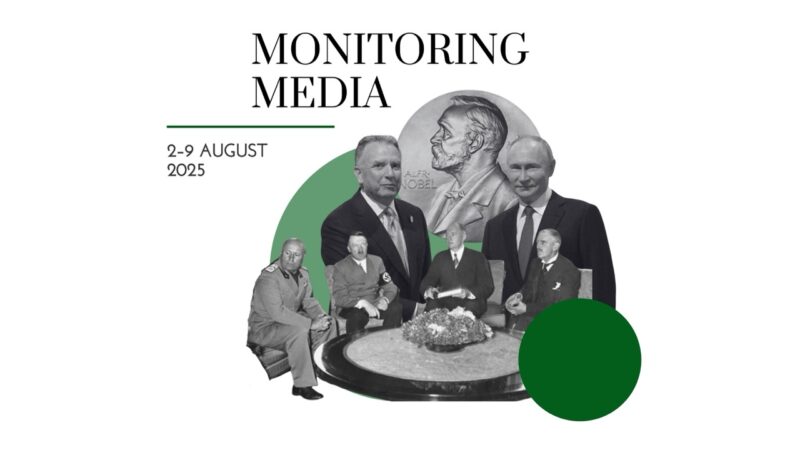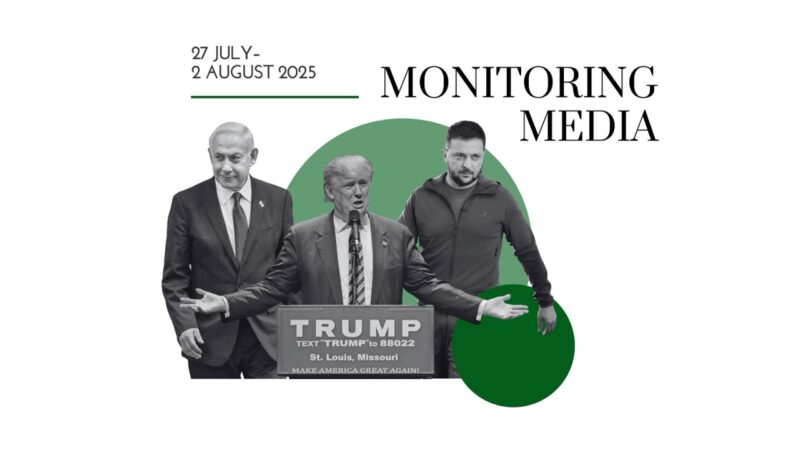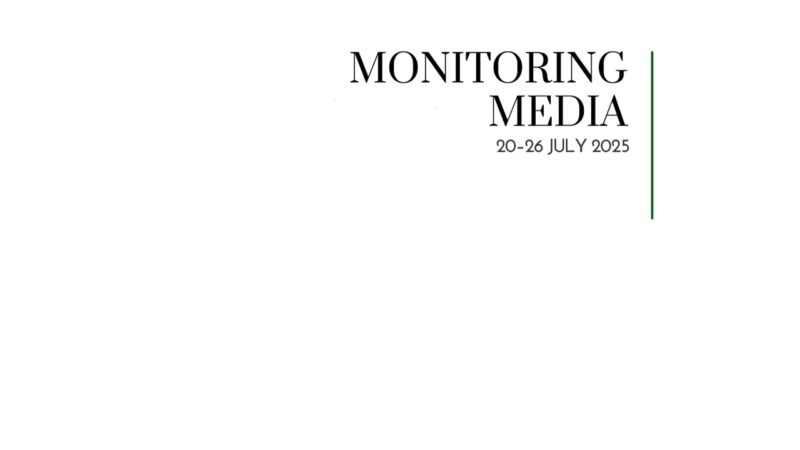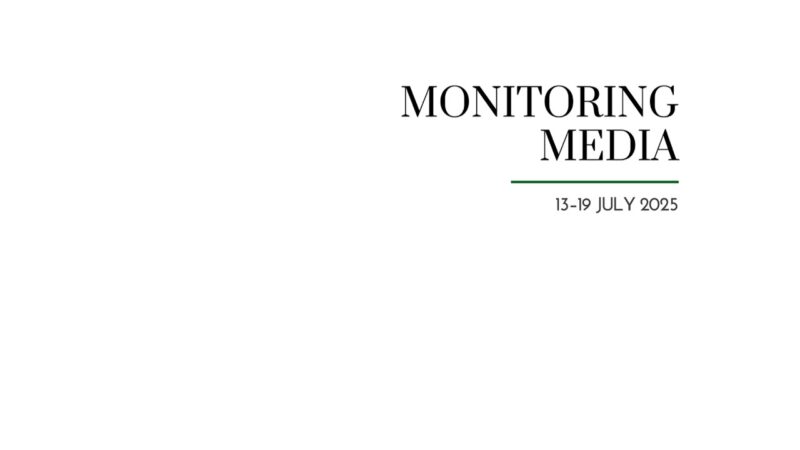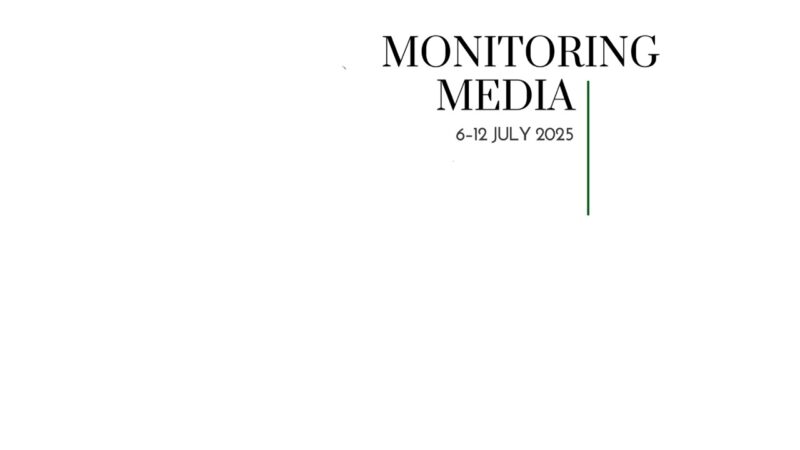Success of Ukraine’s counteroffensive is pivotal for peace talks

CIUS weekly report on North American media coverage of Ukrainian affairs, 8–14 April 2023
Three publications (The Economist, Foreign Affairs, and Foreign Policy) were selected to prepare this report on how the situation in Ukraine was portrayed in the North American press during the past week (8–14 April 2023). The sample was compiled based on their impact on public opinion as well as on their professional reputation, popularity among the readership, and topical relevance. These three publications represent centrist and conservative viewpoints on the political spectrum.
This report covers only the most-read and relevant articles about Ukraine, as ranked by the respective North American publications themselves in the past week. Its scope covers promoted articles on home pages and articles from special sections on Ukraine, with the hashtag #Ukraine, from the paper editions of the publications, and about Ukraine from opinion columns and editorials.
Topics featured in the selected articles:
- Ukraine’s current affairs: Ukrainians have become proficient at blowing up Russian tanks; liberation of occupied territories may be harder than Ukraine’s command expected; Ukraine’s NATO membership is in the interest of all Western states;
- The world and Ukraine: scenarios for Russo-Ukrainian peace talks should be worked out before the war ends; peace talks likely to start when Ukraine finishes its counteroffensive; Russo-Ukrainian war is an element in the planned construction of a superpower-centred world order; Japan becoming a proactive player in the sphere of Indo-Pacific security;
- Russia at war: Russia joins with China as a junior partner.
Main arguments:
Ukrainians effectively employ heavy mining and improvisation to disrupt Russian tank attacks. The Economist examines the phenomenon of hundreds of Russian tanks falling prey to Ukrainian mines and identifies the reasons behind it: mistrust of Russian tank crews in their command; faulty demining equipment; and the creativity and effectiveness of Ukraine’s anti-tank brigades. According to The Economist, tanks should not be easily destroyed by mines—specifically, Soviet-era TM-62 mines, which are the ones most frequently used by Ukrainians. However, destroyed equipment stats at Vuhledar demonstrate that a tank can suffer considerable damage if the mines are placed close to each other. Apart from that, for tanks to advance through a minefield unscathed, they need to stay within safe paths created by specialized trawls. In the Russian case, the effectiveness of these trawls is rather low, as they fail to clear all mines. Moreover, even if Russian tanks move within a previously created safe line, Ukrainian defenders need only knock out the leading vehicle in order to disrupt the advancement of the whole column, prompting the remaining vehicles to swerve into the minefield. The Economist concludes, “In the coming weeks, Ukraine will need to show mastery of what Russia has not. It is planning its own counter-offensive, and Russia’s own TM-62 mines guard key territory in the south and east.”
Ukraine will likely win but fail to achieve all its desired objectives in the war against Russia. Rajan Menon (Foreign Affairs) believes that Ukraine’s forthcoming counteroffensive, if successful, will likely end the war. The article starts with reflections on why Western analysts assumed in February 2022 that Russia (a power with overwhelming military might) would be victorious and how Ukraine (a power that capitalizes on stronger morale and superior generalship) proved these beliefs wrong. Considering recent developments, the author argues that while Ukraine may not achieve a decisive victory, a “less-than-perfect outcome” is within reach. Menon criticizes analysts who believe that a prolonged war works for Russia, given that it can mobilize more soldiers. In his view, numbers do not win wars, as new soldiers need to be trained, equipped, and commanded; today, Russia is facing deficiencies in the military supply system and officer staff. New soldiers are also the first to experience deflated morale if shocked by high casualty rates, not least due to “blatant incompetence of the military high command.” Oppositely, as Menon emphasizes, “Ukrainians are defending their homeland against an invader and believe that losing the war could lead to the loss of their country…Ukrainian troops have much greater resolve, which they have demonstrated…in places such as Bakhmut, Avdiivka, and Vuhledar…In war, the side that has more [morale] will endure greater suffering and make bigger sacrifices.” The author also suggests that consistent Western support to Ukraine and increased deliveries of sophisticated weaponry are important factors in maintaining the morale of the Ukrainian side. Menon believes that under the circumstances Ukrainians have what it takes to push Russians out of the occupied territories. However, he also worries that not all of Ukraine’s territories may be liberated; Russia may retain Crimea and eastern parts of Ukraine if it manages to maintain or increase its volumes of destruction and if Western support wanes at any point.
Ukraine’s membership in NATO should be understood to be in everyone’s interest, including Western governments. Kristi Raik (Foreign Policy) argues that Ukraine should follow Finland’s path to NATO, which anticipates a clear membership track: “Finland’s neutrality policy during the Cold War used to be seen by some Western commentators…as a possible model for Ukraine. However, it is today’s Finland—not that of the Cold War era—that provides the best possible model for Kyiv.” Raik highlights that Finland’s Cold War neutrality was nothing but a survival strategy to avoid provoking the Kremlin. However, right after the USSR collapsed Finland filed an application for EU membership. Afterwards, with Russia’s 2022 invasion of Ukraine Finland applied for NATO and was accepted in unprecedentedly short terms. Raik writes that “after Finland tried for decades to build a relationship with its former invader based on cooperation and trust, the war in Ukraine brought back historical memories” which dramatically changed public opinion and encouraged Helsinki to seek the strongest security guarantees. In the case of Ukraine, according to Raik, public opinion has already been formed: EU and NATO membership were enshrined into the Constitution of Ukraine in 2018. However, the lack of consensus on Ukraine’s membership among the NATO states is a serious unfavourable factor. Some Western governments are holding on to “the flawed logic that led to war in the first place: that security in Europe can be improved only if Russia is not provoked and its alleged security concerns are respected.” Western governments’ indecisiveness regarding Ukraine’s NATO membership stems from three persistent misleading beliefs: such a move will drag their armies into war, as they will be destined to defend Ukraine; support for NATO membership among Ukrainians is comparatively low (in fact, today 86 per cent of Ukrainians are in favour); and Ukraine has a very similar political identity to Russia. Raik concludes that “Ukraine’s full integration to the Euro-Atlantic structures is necessary to ensure that the tragedies of Raate Road in 1940 or Bucha in 2022 will never be repeated.”
Ukraine and its partners should be planning peace negotiations while fighting the war. Jonathan Powell, former British PM Tony Blair’s chief-of-staff, discusses the Good Friday Agreement (which this year marks the 25th anniversary of Anglo-Irish ceasefire) in The Economist and draws lessons for Ukraine on securing long-lasting peace. He starts with the assertion that “even the most intractable conflicts can eventually be resolved by negotiation,” referring to the Russo-Ukrainian war, no matter how impossible it seems now. To reach the point of negotiation, Powell recommends waiting until the war enters the stage of a “perceived mutually hurting stalemate” and leaders on both sides agree to take political risks. This stage is not expected at any time soon. On the one hand, Ukrainian society is pushing for the complete liberation of all occupied territories and has high expectations for the coming counteroffensive. On the other hand, Russia is counting on fractures in Western support of Ukraine and on the reshuffling of powers in Washington after the 2024 US presidential election. To ensure a constructive spirit of the negotiations, both fighting states will need to cultivate their network of mediators. For Ukraine, these mediators may include the US, UK, and Poland; for Russia, they may be China, India, Brazil, and South Africa. Regardless, Powell argues that a ceasefire, armistice, and/or frozen conflict are very unfavourable scenarios for Ukraine; thus, at a certain point Ukrainians will need to start trusting Russians in order to establish mutual monitoring mechanisms and guarantees—acknowledging that it will be challenging for Ukraine’s and Russia’s leaders to “sell peace agreement” to their respective societies. Powell concludes that “while the focus is rightly on prosecuting the war, it should not blind us to the need to start planning now for the peace negotiations that will follow.”
Ukraine-Russia peace talks likely to start once Ukraine’s counteroffensive loses momentum. In their elaborate article, Richard Haass and Charles Kupchan (Foreign Affairs) analyze human and economic costs, the Russian military’s numerical superiority, and Ukraine’s greater operational skill and morale, deducing that “the most likely outcome of the conflict is not a complete Ukrainian victory but a bloody stalemate.” In this light, they present their version of a plan for how the West can move Ukraine and Russia from the battlefield to the negotiating table. This plan consists of two stages. To start, the West should significantly increase the quantity and quality of weapons delivered to Ukraine in order to bolster its defences and make the forthcoming counteroffensive excruciatingly painful for Russia. Then the West can set the stage for negotiations and broker a lasting peace to which both sides may agree in light of their growing exhaustion. However, Haass and Kupchan highlight that peace per se has many undefined variables: as of today, both governments in Kyiv and the Kremlin have much to lose, and their societies are enraged, distrustful of one another, and not willing to compromise. Another risk to the peace plan is that, on the one hand, “even if the West steps up its military assistance, Ukraine is poised to fall well short of vanquishing Russian forces. It is running out of soldiers and ammunition, and its economy continues to deteriorate.” On the other hand, if the Russian position on the battlefield becomes precarious, then it is anticipated that China will start to arm its junior partner. Haass and Kupchan argue that Ukraine and its allies in the West should not pursue a Pyrrhic victory; even if Ukraine’s forthcoming counteroffensive is successful, the troops’ advancement will again stop at a certain point. That, then, would be the moment to end the policy of supporting Ukraine for “as long as it takes” and seriously consider peace talks. The talks should be conducted along three parallel tracks. “On one track would be direct talks between Ukraine and Russia, facilitated by international mediators, on the terms of peace. On the second track, NATO allies would start a strategic dialogue with Russia on arms control and the broader European security architecture.” Finally, the third track should connect Kyiv and NATO allies regarding the terms of Ukraine’s security and restoration of its territorial integrity.
Russo-Ukrainian war is a case study for the behaviour of other countries in the future. Bilahari Kausikan (Foreign Affairs) frames the Russo-Ukrainan war in the context of a new age of competition among superpowers and highlights a few relevant issues. Firstly, this war will likely evolve into a prolonged proxy conflict between the US and China, defining new features of international relations in the twenty-first century. Secondly, the war will encourage other states to either take sides with one of the superpowers or navigate between the interests of “hostile, competitive blocks.” Thirdly, the war is a “violation of the fundamental norms of international relations that cannot go unchallenged.” Yet, it is also hardly exceptional and simultaneously utterly unacceptable for all countries across the world. Fourthly, the interest of the Global South in the war is eroding not least because “white people are killing white people with the support of other white people”; this potentially impacts the condemnation of Russian actions at the UN level. Fifthly, while the war is an existential threat to Ukraine and a matter of grave concern for the EU, it is only a second-order issue for the United States, which cares more about countering China. Sixthly, in the new world of superpowers, “China and the United States must accept the risks and vulnerabilities of remaining connected to each other. China and the United States will compete and do so robustly, but they will compete within the single system of which they are both vital parts.” Finally, speaking of Russia, Kausikan defines it as “a very dangerous adversary [for the US], but even before the Ukraine war [sic] it was on a downward long-term trajectory for economic and demographic reasons, and Putin’s miscalculation in Ukraine has only hastened his country’s decline.” Kausikan concludes that in the new world order, structured around the US and China as its two major poles, most countries will try conducting flexible and adjustable policies that are not firmly tied to the superpowers’ interests; the Russo-Ukrainian war demonstrates how this may be done.
Russo-Ukrainian war prompts Japan to rethink its foreign policy and rise as an Asian power. C. Raja Mohan (Foreign Policy) writes that while many Western analysts were paying attention to the deals which Xi Jinping made in the Kremlin in late March, few reported on Fumio Kishida’s simultaneous visit to Kyiv. The Japanese Prime Minister’s official visit was important not only as a solid gesture of support offered to Ukraine, it also brought to the fore three aspects of contemporary Asian politics. Firstly, European security is no longer possible without Asian participation. On the one hand, the close cooperation between Russia, China, and Iran will increase tensions in Central and Eastern Europe; on the other hand, the interests of Japan and South Korea will significantly influence the decisions and activities of NATO. Secondly, China’s view on the war and sympathy for Russia are not shared by all Asian countries. Thirdly, Xi can not be regarded as an unbiased peacemaker, because he demonstrates double standards in his treatment of Russia and Ukraine. Mohan also highlights that Kishida’s visit to Kyiv became another step in Japan’s building of a new security architecture in the Indo-Pacific. In particular, Japan is striving to find potential allies among the states in the region, especially those concerned by Russia’s aggression, and exact their commitment. Mohan concludes that “in arguing that ‘Ukraine is the future of Asia,’ Kishida has pressed Japan and Asia to see the implications of a nuclear-armed power unilaterally changing the territorial status quo. With its increasingly clear-eyed security policies, Japan is reminding the West that coping with the challenges presented by China and Russia demands greater discipline.” This particularly means that Japan wants to take the initiative to organize states in the region—and steer the solution to European and global security challenges—as a rising power.
Russia gradually and irreversibly becoming a junior partner to China. Alexander Gabuev (Foreign Affairs) argues that Russia and China are deepening their defence partnership behind the scenes. It remains to be seen what exact arrangements between Putin and Xi Jinping were struck during the visit of the latter to the Kremlin in March 2023, but they were undoubtedly momentous and related to arms deals: “The war in Ukraine and ensuing Western sanctions on Russia are reducing the Kremlin’s options and pushing Russia’s economic and technological dependence on China to unprecedented levels. These changes give China a growing amount of leverage over Russia. At the same time, China’s fraying relationship with the United States makes Moscow an indispensable junior partner to Beijing in pushing back against the United States and its allies. China has no other friend that brings as much to the table.” Gabuev scrutinizes the signing of fourteen documents by both sides at the end of Xi’s visit and highlights the following points. Firstly, more than half of Putin’s team participating in the negotiations with the Chinese were officials directly involved in Russia’s weapons and space programs. Secondly, the undisclosed content of the negotiated deals likely enhances high-tech military cooperation between the two countries—as it happened in 2014, with the export of the newest Russian S-400 surface-to-air missile system to China, and in 2019, with Russia helping China to develop a missile early-warning system. Thirdly, part of the deals touched upon improving Russian companies’ access to the Chinese financial system and markets. Gabuev concludes that current Sino-Russian relations have become asymmetrical but not one-sided. Regardless of its growing influence, Beijing will not have the liberty to decisively influence the Kremlin’s policies any time soon.
